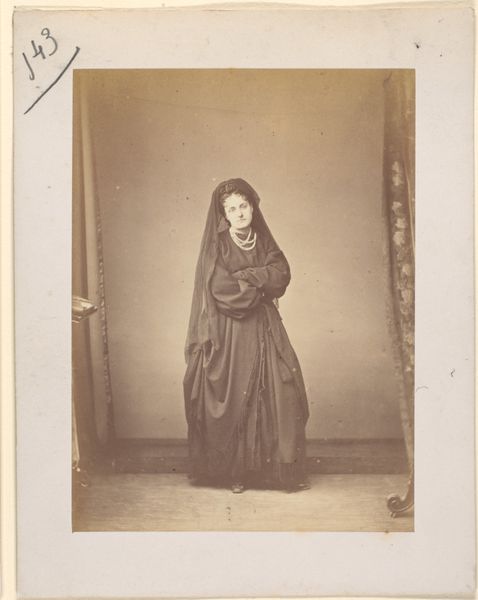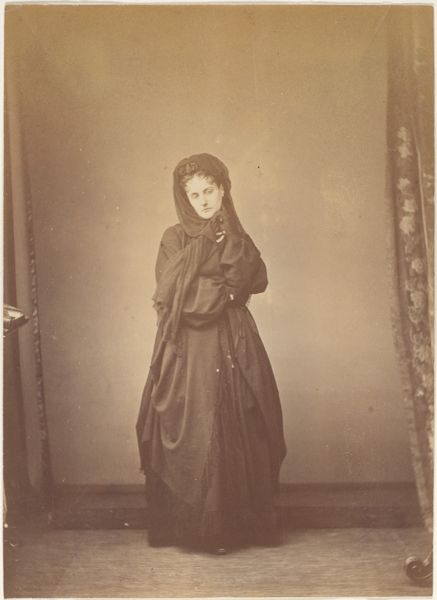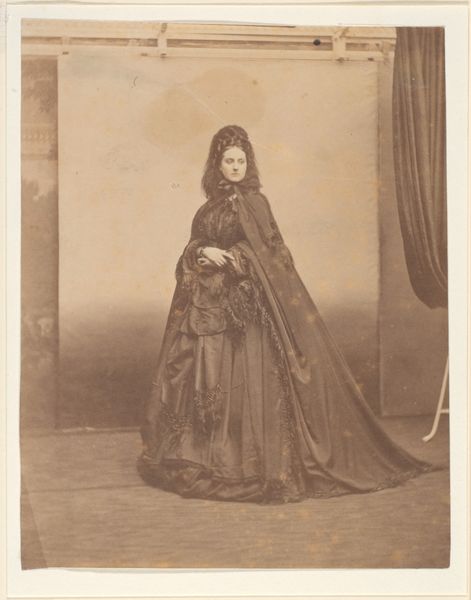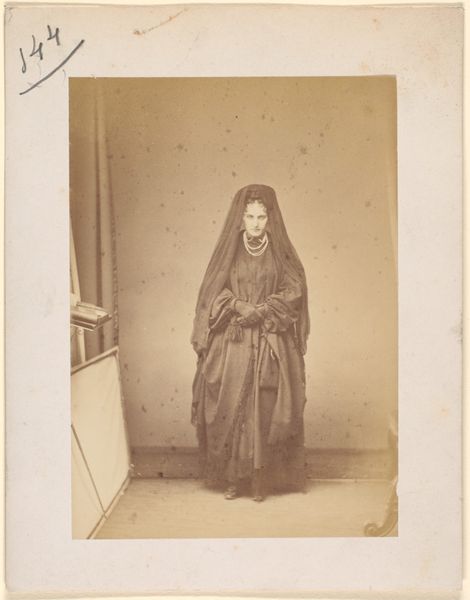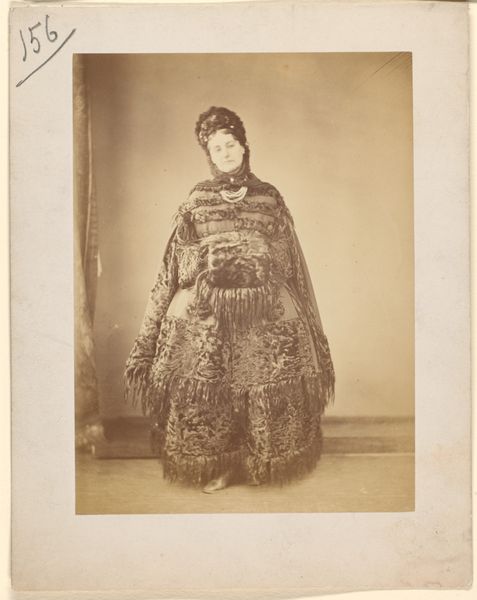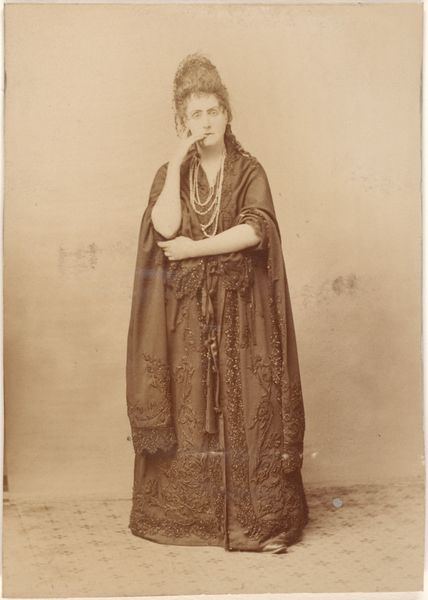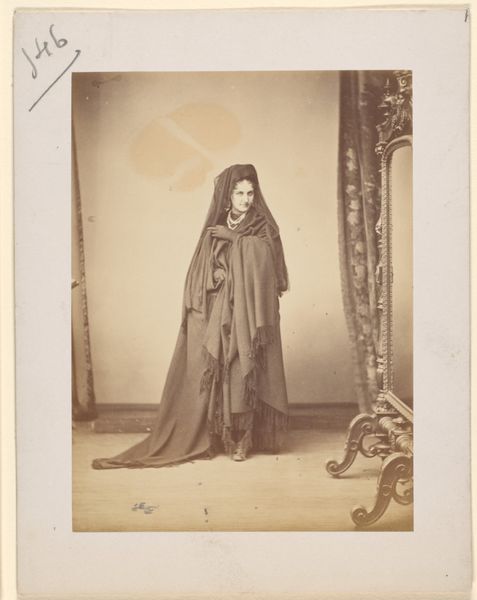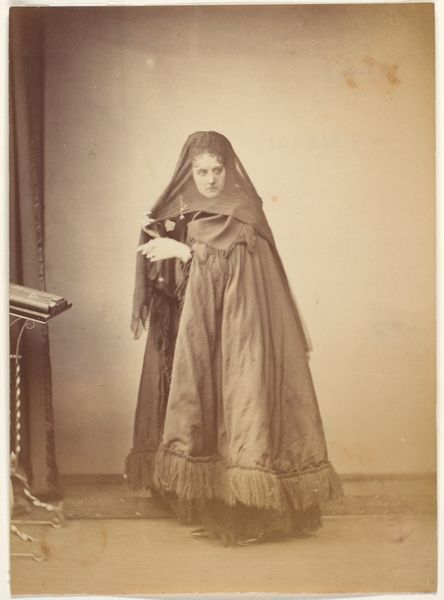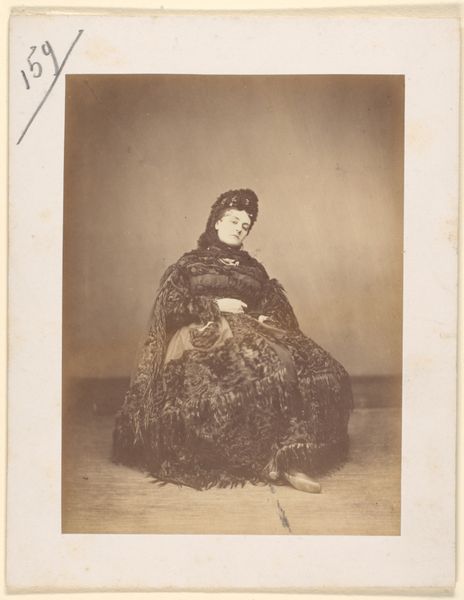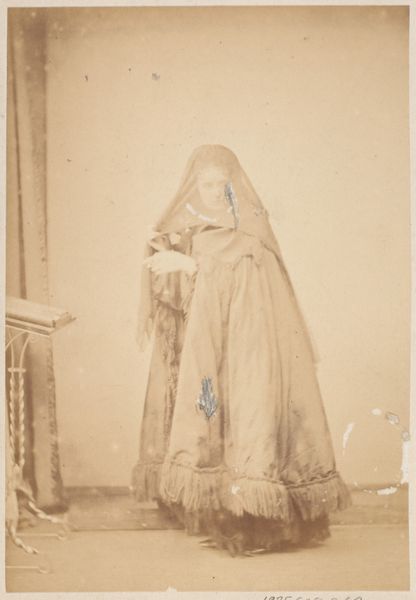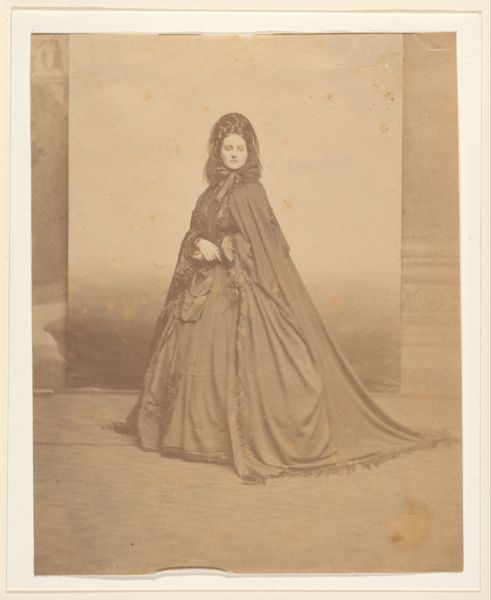
Copyright: Public Domain
Curator: Immediately, I see a sort of Victorian solemnity. The pose and sepia tones evoke a somber mood. Editor: That’s a good observation. This gelatin silver print is titled “Série à la Ristori,” attributed to Pierre-Louis Pierson and it dates to the 1860s. We’re fortunate to have it here at the Met. Pierson was known for photographing Virginia Countess di Castiglione, but he clearly had other notable subjects. Curator: The veil immediately speaks to mourning, but the pearls disrupt that reading a bit. It’s almost as if she’s enacting sorrow. Editor: Indeed. Ristori was a celebrated tragic actress. Pierson likely captured her in character, or perhaps alluding to a famous role. The symbolism would resonate deeply with contemporary audiences. Think about it: wearing the veil suggests grief, the pearls could signify purity or tears. She is very self-contained. It speaks to very dramatic role playing. Curator: Looking at it from the perspective of photography at the time, It is staged, but it pushes the boundaries of portraiture, which gives some autonomy to the actress and photographer, given the cultural restrictions of the time, what were they trying to achieve? Editor: It makes you wonder about the intended audience, doesn’t it? How they would have interpreted these very coded signs and symbols within the strictures of social expectations for women. Was it meant to be provocative, or simply evocative of high drama? Curator: Either way, this image serves as a window into 19th-century performance and celebrity culture, and the social conventions surrounding mourning and women. And those pearl details invite contemplation. Editor: Absolutely. Pierson and Ristori crafted an image rich with layered meanings that invite continued decoding, even today.
Comments
No comments
Be the first to comment and join the conversation on the ultimate creative platform.
